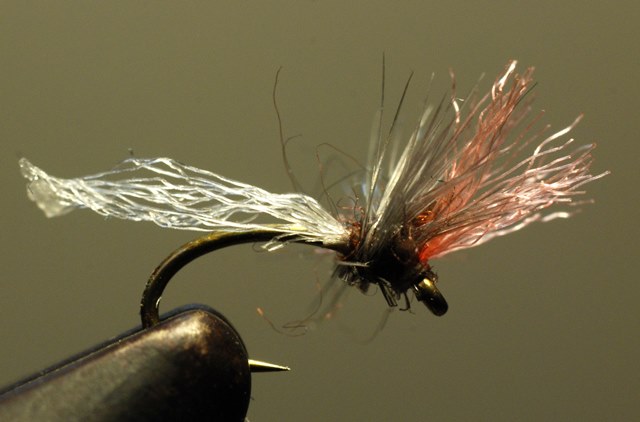TAKA'S EMERGERS
/
NOTE: If you haven’t already read my November 11 post (“October Caddis in November) check it out for some background on “Taka” (Takaaki Suzuki).
It is early morning. Everyone is asleep except for Taka and me. I’m sitting in a chair watching him tie flies. He’s busy cranking out what look to be about size 20 Blue-winged Olive dun emerger imitations. There’s already a pile of them on top of his tablet computer. I really don’t know when he sleeps. Taka distributed two or three of these flies to each of us several days ago. I know for sure they work when the trout are rising to the olives that hatch almost every day on every river we’ve fished in northern California.
The fly is functional simplicity incarnate. Two Coq-de-Leon barbs serve for the tails. The body is tapered gray tying thread. A medium dun hackle sized just a bit larger than the hook gap is wrapped and then trimmed so the fly sits flat on the water’s surface. What you might call a sparse wing or post of a translucent orange Antron-like winging material is in front of the hackle. It’s cocked at a slight angle over the eye of the hook. It’s kind of weird how all of these sparsely tied elements somehow make the fly highly visible on the water’s surface. And if you like fishing small flies you’ll know that being able to see the fly on the water dramatically increases your chances for positive hook-ups
It’s also an incredibly durable fly which is important because the trout can’t get enough of it. That durability goes right back to the materials—it’s pretty hard to beat up a thread body and the hackle holds up well because it’s a bit shorter and trimmed off on the bottom. The wing is indestructible. That leaves the tails as the most delicate part of the fly and they hold up amazingly well.
So yes, I was incredibly impressed with the imitation. And yes, I made sure to bring some home as examples for my own tying. I’ve since found that the design of the fly is impressionistic enough that it covers a lot of ground when trout are rising to any small naturals.
And get this. Just the other day I cleaned up during a midge hatch with a variation of the same pattern. Taka had given us just two of these imitations. I never tried them in California because the dun emerger worked fine, but I did tuck both of them away in my fly box for future reference, i.e., I knew they’d be great for our winter midge hatches here in Colorado. This pattern looks more like a classic midge emerger, but I bet trout would take it during a Blue-winged Olive hatch, too. Once again, you can really see this fly on the water and it’s incredibly durable.
I guess what I’m trying to say here is that I really learned a lot watching Taka tie small flies. His imitations are sparse, simple, highly visible on the water and durable. And the trout like them. What more can you ask for?
Taka tying emergers.




